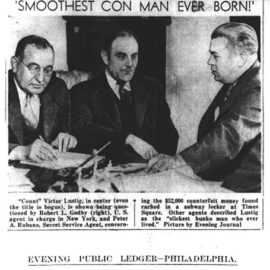

This article is an excerpt from the Shortform summary of "The Case for Christ" by Lee Strobel. Shortform has the world's best summaries of books you should be reading.
Like this article? Sign up for a free trial here .
Who is Dr. Gary Habermas? What are his views on the resurrection, and what do these mean for those who seek evidence that Jesus existed?
Dr. Gary Habermas is a resurrection expert and a formidable voice in Christian theology. He has frequently participated in high profile debates with atheists.
Keep reading to find out what author Lee Strobel learned from Dr. Gary Habermas.
Who Is Dr. Gary Habermas?
The authenticity of the empty tomb established, Strobel sets out to determine whether the second key proof of the Resurrection—that certain people encountered Jesus after he was buried—holds up.
To do so, he travels to Lynchburg, Virginia, to meet with Dr. Gary Habermas, resurrection expert and one of the most formidable apologists of Christianity in the world. A professor at Liberty University, Habermas has participated in high-profile debates with leading atheists, including Antony Flew, author of The Presumption of Atheism. Famously, in his debate with Flew, four of the five judges—who were philosophers affiliated with various colleges and universities—declared Habermas the winner, and the fifth said the debate was a draw.
Dr. Gary Habermas earned his PhD at Michigan State University, and he has authored seven books concerning the Resurrection, including The Resurrection of Jesus: An Apologetic and Did Jesus Rise from the Dead? The Resurrection Debate.
Who Saw Jesus Rise?
Critics of Christianity are eager to point out that, whatever other evidence there might be for the Resurrection, no one actually saw Jesus rise from the dead and leave the tomb.
Scholars like Dr. Gary Habermas concede this argument, but they definitely don’t think it means the Resurrection didn’t happen. If Jesus died on the cross—which Dr. Metherell’s account established beyond the shadow of a doubt (see Chapter 11)—then all there’s left to prove is whether Jesus appeared to people after his death. And there’s ample evidence to indicate he did.
Evidence in 1 Corinthians
Another piece of evidence Dr. Gary Habermas points to is the Corinthians. The early church creed featured in 1 Corinthians includes the assertion by Paul that Jesus had not only appeared to him, but to the twelve apostles, 500 of Jesus’s followers, and Jesus’s brother James. There are several reasons why Paul’s testimony is especially convincing:
- Scholars have dated the writing of 1 Corinthians to between 55 and 57 AD, and Paul likely gave the creed to the church at Corinth prior to 51 AD. Which is to say, the creed was being promulgated a mere twenty years after Jesus’s death. (And possibly even earlier: Habermas himself agrees with the minority of scholars who trace the creed to between 32 and 38 AD—within two to three years of the Resurrection.) If early Christians or their critics took issue with Paul’s account, there were plenty of eyewitnesses still living whom they could have questioned.
- Paul was initially a committed skeptic of Jesus. That means that he would have had to have an especially good reason—for example, Jesus’s appearing to him after his death on the cross—to become a believer.
- Paul learned about Jesus’s appearing to the other witnesses when he visited Jerusalem himself. During this trip, Paul interviewed Peter and James in person with the aim of establishing a factual account of the Resurrection (in Galatians 1:18, Paul uses the Greek word historeo—signifying an “investigative inquiry”—to describe his trip to Jerusalem).
- In 1 Corinthians 15:11, Paul states that he’s preaching the same creed as the other apostles. This means that all the apostles, including those like Peter and James that saw Jesus after his death, agreed on the factuality of Jesus’s posthumous appearance.
Dr. Gary Habermas, Resurrection expert, believes that the resurrection can be proven through Biblical text, and his view helped convince Lee Strobel.

———End of Preview———
Like what you just read? Read the rest of the world's best summary of Lee Strobel's "The Case for Christ" at Shortform .
Here's what you'll find in our full The Case for Christ summary :
- How an atheist lawyer-journalist researched Christ and began believing
- The key arguments against the existence of Christ, and why they don't hold up
- How to make up your own mind about whether Christ existed






